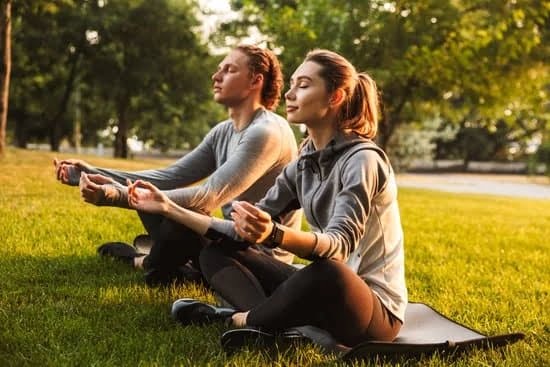Physical fitness is a crucial aspect of overall health and wellness, encompassing various components that contribute to optimal performance. One important subset of physical fitness is the skill-related components, which play a significant role in athletic activities and daily movements. In this article, we will delve into the 6 skill-related components of fitness exercises, highlighting their importance and providing insights into exercises that can improve these components.
The 6 skill-related components of fitness exercises are essential for enhancing overall physical performance and are particularly vital for individuals involved in sports or other physically demanding activities. These components include speed, agility, balance, coordination, reaction time, and power. By incorporating exercises that target these specific skills into a workout routine, individuals can improve their athletic prowess and functional abilities.
Throughout this article, we will explore each skill-related component in detail, discussing its significance in physical activities and presenting a variety of exercises aimed at improving these skills. Whether you are an athlete looking to enhance your performance on the field or simply aiming to improve your overall physical fitness, understanding and incorporating exercises for the skill-related components is crucial for reaching your fitness goals.
Stay tuned as we provide valuable insights into effective exercises for each of the 6 skill-related components of fitness.
Speed
Sprints are an excellent way to enhance speed as they involve short bursts of maximum effort, helping to improve acceleration and top-end speed. Additionally, agility drills such as shuttle runs and ladder drills are effective in targeting speed by requiring quick footwork and coordination. These drills often simulate movements commonly found in sports, making them highly beneficial for athletes looking to improve their speed on the field or court.
Agility is another skill-related component of fitness closely related to speed. Agility refers to the ability to change direction quickly and efficiently while maintaining control and balance. Exercises targeting agility can significantly improve an individual’s ability to navigate through obstacles and change direction rapidly. Examples of agility exercises include cone drills, shuttle runs, and lateral jumps, all of which require quick changes in movement direction and are beneficial for improving overall agility.
Improving speed through dedicated exercises not only enhances athletic performance but also contributes to overall physical fitness. By incorporating sprints, agility drills, and ladder drills into a workout routine, individuals can experience improvements in both their speed and endurance levels. With consistent training focused on these specific skill-related components of fitness exercises, individuals can expect to see substantial enhancements in their overall physical performance.
Agility
One effective exercise for improving agility is cone drills. These drills involve setting up cones in different patterns and maneuvering through them as quickly as possible. This helps individuals develop their ability to change direction rapidly and improves their overall coordination.
Another beneficial exercise for enhancing agility is shuttle runs. Shuttle runs involve sprinting back and forth between two points within a designated area, requiring quick acceleration, deceleration, and changes in direction.
Additionally, lateral jumps are an excellent exercise for improving agility. Performing repetitive lateral jumps helps individuals develop the strength and coordination needed to move sideways quickly and efficiently.
By incorporating these exercises into a workout routine, individuals can significantly enhance their agility, leading to improved performance in sports and other physical activities that require rapid changes in movement direction. Incorporating agility exercises can also help reduce the risk of injury by improving body control and coordination during fast-paced movements.
Balance
One effective exercise for improving balance is single-leg squats. This exercise not only strengthens the muscles in the legs and core but also challenges stability and proprioception. Stability ball exercises, such as seated or standing on a stability ball, can also help improve balance by engaging the core muscles to maintain stability. Additionally, yoga poses that require holding positions on one leg or in challenging positions are great for enhancing balance and proprioception.
It’s important to note that improving balance not only benefits athletes in their respective sports but also contributes to better posture, coordination, and overall functional movement in daily life. By incorporating these exercises into a workout routine, individuals can experience improved balance, reduced risk of falls or injuries, and enhanced athletic performance.
| Balance Exercises | Description |
|---|---|
| Single-Leg Squats | This exercise strengthens leg and core muscles while challenging stability. |
| Stability Ball Exercises | Seated or standing on a stability ball engages core muscles to improve balance. |
| Yoga Poses | Holding challenging yoga poses on one leg helps enhance balance and proprioception. |
Coordination
One effective exercise for improving coordination is ladder drills. Ladder drills involve quick and precise footwork, requiring the individual to move their feet in specific patterns through the rungs of a ladder laid out on the ground. This not only improves coordination but also enhances foot speed and agility, making it a highly beneficial exercise for athletes in sports like soccer, football, and basketball.
Jump rope routines are another fantastic way to improve coordination. Jumping rope involves coordinating hand and foot movements while maintaining balance and rhythm. It also helps develop cardiovascular endurance, making it an all-around effective exercise for athletes and fitness enthusiasts alike.
Martial arts drills are also great for enhancing coordination as they involve complex sequences of movements that require precise timing and control. Whether it’s practicing punches, kicks, or blocks, martial arts training can significantly improve overall coordination, balance, and flexibility.
The discipline learned from martial arts can benefit individuals not only in sports but also in their daily lives. These 6 skill-related components of fitness exercises should be incorporated into a comprehensive workout routine to achieve optimal physical performance.
Reaction Time
Reaction time is a critical skill related component of fitness that plays a vital role in various sports and daily activities. It refers to the ability to respond quickly to stimuli, whether it’s the sound of a starting gun, the movement of an opponent, or the trajectory of a ball. Improving reaction time can lead to better performance in sports such as tennis, basketball, and soccer, as well as enhance safety in activities like driving or crossing the street.
To enhance reaction time, there are specific exercises that can be incorporated into a fitness routine. These exercises are designed to sharpen cognitive processing and motor skills, ultimately leading to faster reactions. Here are some exercises that can help improve reaction time:
- Ball Catching Drills: Throwing and catching balls of varying sizes and weights can train the eyes and hands to work together more efficiently.
- Reaction Ball Drills: Using a reaction ball that bounces unpredictably can challenge reflexes and improve hand-eye coordination.
- Table Tennis Drills: Playing table tennis involves quick decision-making and rapid movements, making it an excellent activity for improving reaction time.
Incorporating these exercises into a workout regimen can significantly enhance an individual’s ability to react swiftly in various situations, leading to improved overall physical performance. Whether aiming for success on the field or seeking greater safety in daily activities, improving reaction time through targeted exercises is crucial.
Power
To improve power, individuals can include the following exercises in their workout routine:
- Medicine Ball Throws: This exercise involves throwing a weighted medicine ball with maximum force, which helps develop upper body power and explosiveness.
- Plyometric Movements: Plyometrics consist of high-intensity, explosive movements such as box jumps, depth jumps, and bounding exercises. These movements help improve lower body power by training muscles to generate maximal force in a short amount of time.
- Olympic Lifts: Olympic lifts like the clean and jerk and snatch are highly effective for developing total body power. These complex movements require rapid force production and coordination, making them valuable for athletes looking to enhance their power capabilities.
Incorporating these exercises into a workout routine can lead to significant improvements in power, ultimately translating to enhanced athletic performance across various sports and physical activities. By focusing on developing power through specific exercises targeting explosiveness and force production, individuals can take their fitness and performance to the next level.
Conclusion
In conclusion, the 6 skill-related components of fitness exercises play a crucial role in overall physical performance and are essential for improved sports performance. Speed, agility, balance, coordination, reaction time, and power are all key elements that contribute to an individual’s athletic abilities and should not be overlooked when it comes to workout routines.
By incorporating exercises that target these components into a regular fitness regimen, individuals can enhance their overall physical fitness and excel in their respective sports or physical activities.
It is evident that exercises designed to improve speed, agility, balance, coordination, reaction time, and power are not only beneficial for athletes but also for individuals pursuing general physical fitness. Whether it’s sprinting drills for speed, stability ball exercises for balance or jump rope routines for coordination – these exercises offer a wide range of benefits that extend beyond athletic performance.
Ultimately, integrating these exercises into a workout routine can lead to improved strength, flexibility, and cardiovascular endurance while also sharpening the skills necessary for success in various sports.
Frequently Asked Questions
What Are the 6 Components of Skill Related Fitness?
The six components of skill-related fitness are agility, balance, coordination, power, reaction time, and speed. These components help individuals perform well in various physical activities and sports.
What Are the 6 Components of Physical Fitness?
The six components of physical fitness are cardiorespiratory endurance, muscular strength, muscular endurance, flexibility, body composition, and balance. Together, these components contribute to overall health and wellness.
What Are the 10 Examples of Skill Related Fitness?
Ten examples of skill-related fitness include sprinting in track and field, shooting accuracy in basketball, quick footwork in soccer, fast reflexes in tennis, precise hand-eye coordination in archery, explosive power in weightlifting, agility in obstacle course racing, swift reaction time in boxing, dynamic balance in gymnastics, and rapid change of direction in football.
These skills are crucial for excelling in specific sports or physical activities.

Passionate about providing useful information to anyone with an interest in the field of Personal Training, I strive to pass on to our readers quality information and to answer any questions about Personal Trainers, the work they do and how to become one.





